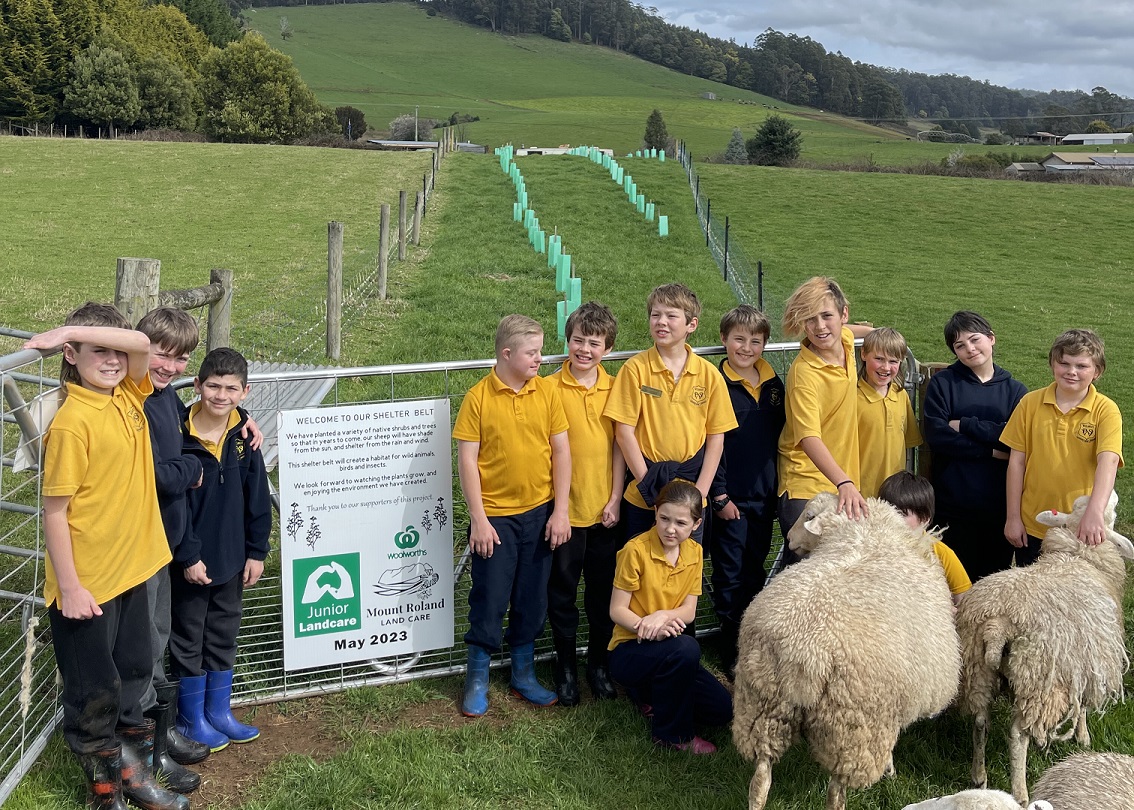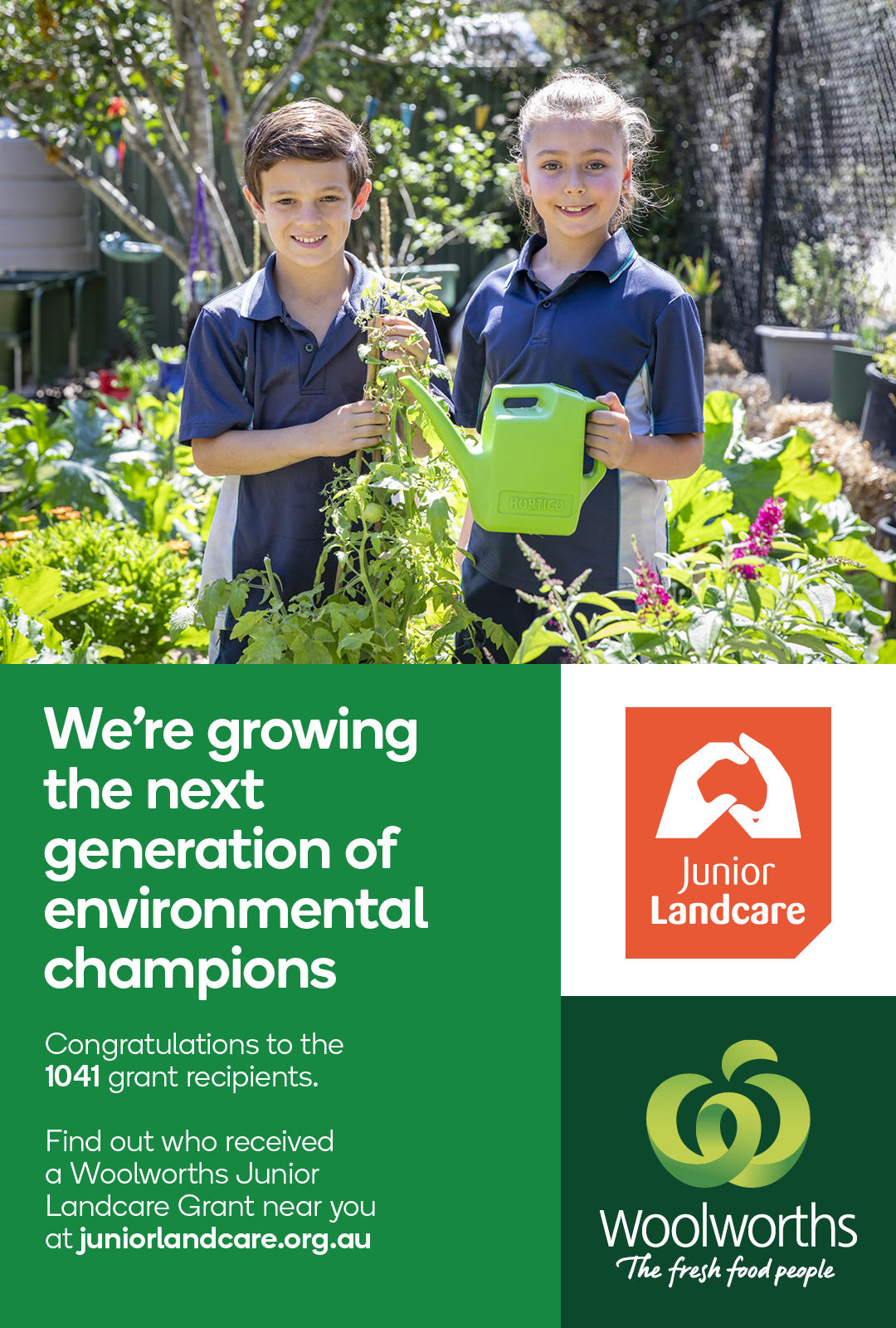CASE STUDY

Age Groups: 7-13
Grant Name: 2023 Woolworths Junior Landcare Grants
School: Wilmot Primary School
Grant Sponsor: Woolworths
Project Overview:
Recipient of the Woolworths Junior Landcare Grant, Wilmot Primary School in Tasmania took impressive steps to care for local biodiversity. The students have assisted in constructing a shelter belt, thereby creating a biodiverse environment on their farm while ensuring protection for their livestock. Their involvement in the project extended to planning the area for the shelter belts, measuring the length to determine materials needed for protective fencing, and calculating the number of plants required. The students planted trees, erected tree guards, monitored the progress, and replanted trees that did not thrive. The students designed interpretive signage for the entrance gates to the shelter belts. This hands-on project has not only created a habitat for flora and fauna but has also taught the students about their responsibility in caring for and preserving the natural environment.
Educational Outcomes:
The students have applied mathematical skills to measure the fence lines and calculate the number of plants required. They have questioned the significance of planting for the future and how shelter belts benefit both the environment and the livestock on the farm. By using new equipment to plant trees, they learnt how and why the protection guards work. Their creative skills came to play when they designed interpretation signs, which was also a vocabulary and writing skills exercise. Plenty of physical activity occurred when students walked backwards and forwards to the planting areas. They will continue to get lots of exercise watering the plants in the summer. Their ICT skills were used to research the plants that were chosen to make the shelter belt and wildlife areas so they could better understand the specific purpose of the plants.
Conclusion
The school engaged the local Landcare group who provided valuable support throughout the project. The students had the opportunity work alongside passionate people who care for the environment. This experience provided people from the community who were not involved in Landcare, a greater understanding of the work they do and an opportunity to meet new people. The parents enjoyed being part of the school community project, and the whole group celebrated with woodfired pizzas after the planting. The local Landcare group has maintained frequent contact with the school and has already offered to help plant out more areas on the school farm. Overall, the project has brought the school and community together, demonstrating the positive impact of students and adults working together to make a difference to care for the future of their local natural environment. The permanent shelter belts will continue provide enjoyment for both animals and students.
The experience has been very positive for the students, and the school has been pleasantly surprised at how many people in the local and greater community are prepared to provide support, especially with projects that have a direct impact on the school and the local environment.
 Teachers & Educators
Teachers & Educators Youth or Community Groups
Youth or Community Groups